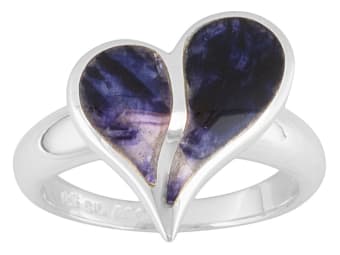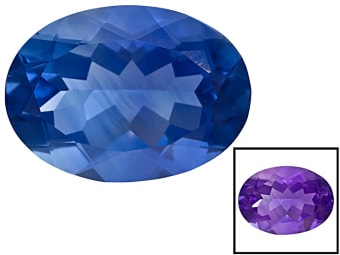Fluorite octahedra are often found at rock shops or gem and mineral shows. Fluorite mineral specimens have become increasingly popular due to the myriad of colors, beautiful cubic forms, and fluorescent reactions they display. The optical phenomenon of fluorescence gets its name from Fluorite. Stones come in every color of the rainbow and multi-color banding is common. Fluorite is used for gemstones, but care must be taken because it has perfect, easy cleavage in four directions. Blue John fluorite, also known as Derbystone, is a banded variety of fluorite from England that has been used for decorative objects and jewelry for centuries.
General Information
Tolerance:(+0.001/-0.001)
LWUV: Variable
Fluorite Colors
-
 Bi-color
Bi-color -
 Black
Black -
 Blue
Blue -
 Brown
Brown -
 Colorless
Colorless -
 Gray
Gray -
 Green
Green -
 Multi-color
Multi-color -
 Orange
Orange -
 Pink
Pink -
 Purple
Purple -
 Purple
Purple -
 Red
Red -
 White
White -
 Yellow
Yellow
Fluorite Spectra
We acknowledge the significant scientific contributions of John S Harris, FGA to the study of gemstone spectra and with deep appreciation to him, acknowledges the use of his images and related notes about gemstones and their spectra in the educational materials on this website.
Alternate Names
Fluorspar, Rainbow Fluorite
Countries of Origin
Tanzania, United Republic Of; Russian Federation; Viet Nam; Czechia; United States of America; United Kingdom of Great Britain and Northern Ireland; Austria; Mongolia; Pakistan; Morocco; Unknown; China; Ireland; Brazil; France; Nepal; Colombia; Switzerland; India; Spain; Canada; Belgium; Norway; Namibia; Italy; Mexico; South Africa; Australia; Peru; Ethiopia; Germany
History
A plentiful, affordable, and colorful gem, fluorite is popular with collectors worldwide. Fluorite often has excellent clarity and crosses the entire color spectrum. One of the most famous fluorescent minerals, fluorite often requires no type of treatment to enhance its appearance. Also prized for its color-change and distinctive multi-color banded varieties, this beautiful stone has so many appealing features, it's no wonder that Roman historian Pliny the Elder named fluorite his "most precious substance."
Care
Wear your fluorite earrings and necklaces every day but save your rings for less frequent wear. This bright stone will offer you years of pleasure if you treat it with care.

More About Fluorite
Many powers are ascribed to fluorite in the world of the metaphysical. Historically, it's linked to thought and intelligence. Some people believe it may help one to rediscover the path to happiness and to align the mind with the true desires of the heart.
Species/Variety
Tiffany Stone
Tiffany stone is opalized fluorite from Utah. The rock can also contain bertrandite, calcite, calcedony, dolomite and quartz. Tiffany stone is formed when carbonate source rocks weather and are replaced by fluorite. The stone was a byproduct of beryllium mining at the Brush Wellman beryllium mine, at Spor Mountain, western Utah. The rock from the mine is crushed to extract the beryllium and most of the gem material in the market is old stock carried out by mine employees or collectors. The material has also been called bertrandite and "ice cream opal." The best pieces will have brecciated areas with dark purple concentrations in the cracks of the pale blue or white matrix. Stones can also show cream, red, orange, and black areas. Todd Harris, a former Brush-Wellman Pit foreman, is credited with naming the stone and introducing it to the gemstone market. Opalized fluorite can also be found from China and Turkey.
Blue John
Blue John is the banded purple and white or yellow variety of fluorite. The major source of this color-zoned fluorite is Castleton in Derbyshire, England, where it is found in at least 14 differently patterned veins.
Optical Phenomena
Color Change or Color Shift Fluorite
Fluorite crystals occur in white, black, clear, and various shades of every color in the rainbow. Color change fluorite is rare, but has been discovered, usually with a blue to purple change. To observe this natural phenomenon, view your gemstone interchangeably in natural and incandescent lighting environments.
LWUV: Variable, but can be strong blue violet







